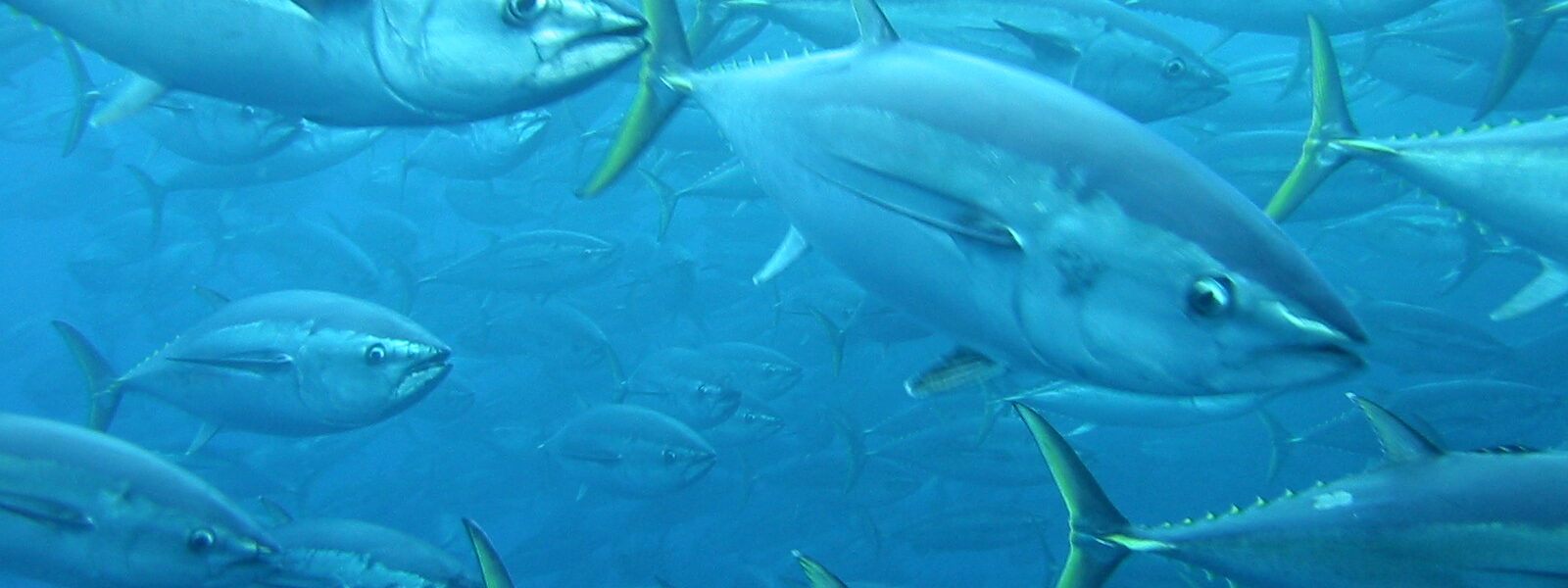

In 1990 Earth Island’s International Marine Mammal Project developed the Dolphin Safe label for canned tuna, now displayed (or adhered to) by more than 800 tuna companies in 76 countries around the world.
But what does “Dolphin Safe” mean when applied to tuna?
Some are confused about what precisely the term “Dolphin Safe” (or, as often appears in Europe, “Dolphin Friendly,” which is usually interchangeable with “Dolphin Safe”) means.
Others have expressed concern that there is nothing to guarantee the label, which is not at all true.
IMMP first established the definition and standards of Dolphin Safe in 1990 to mean tuna caught without deliberately encircling any dolphins with tuna nets during the entire trip of the tuna vessel. No encirclement for the entire trip means no mixing of Dolphin Safe and dolphin-deadly tuna onboard the vessel.
This was the definition of Dolphin Safe that was later codified in federal law under the Dolphin Conservation Consumer Education Act of 1990. In 1995, the Dolphin Safe label definition and standards by IMMP and the US Congress were enlarged to also ban any tuna from carrying the label where any dolphins were accidentally killed or seriously injured. This happens rarely in tuna fishing, if the tuna vessel is targeting tuna schools rather than dolphin pods.
Tuna fleets from Mexico, Venezuela and Colombia still target dolphins in the Eastern Tropical Pacific Ocean to catch tuna, and they often try to hide the fact by falsely labeling tuna as “Amigo del Delfin” or “Dolphin Friendly” in those countries, where there are no “truth in advertising” laws to force them to correctly label tuna as dolphin-deadly. US law prohibits these companies from using a Dolphin Safe label if they export their tuna to the US and do not meet the US standards for truly Dolphin Safe tuna.
Some brands of dolphin-deadly tuna do show up in US stores, especially Latinx specialty stores. The brands we see most often are Dolores and TUNY canned tuna in US stores. These tuna brands cannot carry a Dolphin Safe label unless the company can prove they were caught without chasing and encircling dolphins. IMMP encourages consumers not to buy Dolores or TUNY brand tuna.
To be certain about a can of tuna, shoppers are encouraged to check the IMMP online listing of more than 800 Dolphin Safe tuna companies that have pledged to catch and sell only truly Dolphin Safe tuna with no dolphins chased, harassed, netted, killed or seriously injured. See IMMP's List of Dolphin Safe tuna companies.
We at IMMP also work with tuna companies to address other environmental issues, so the Dolphin Safe label does not just help protect dolphins, but also benefits, for example, sharks and sea turtles, which can be caught as bycatch by tuna purse seiners. We require our companies to pledge to release these species alive if caught in the nets. We encourage tuna companies to ban the removal of fins from sharks on board. We also prohibit companies from fishing in marine protected areas for tuna when the local country bans such fishing, in order to help enforce such restrictions.
The Dolphin Safe label most often is used for canned tuna, but some other tuna products may also carry it. In some countries, we work with companies that sell pizzas with Dolphin Safe tuna and other similar products, and tuna sold in pouches, rather than cans, will often carry a Dolphin Safe label, too.
In the late 1980s, before the Dolphin Safe label, about 80,000 to 100,000 dolphins a year were being killed in tuna nets, the US National Marine Fisheries Service has estimated, on the basis of counts by on-board observers. These deaths occurred in the tuna fishery in the Eastern Tropical Pacific Ocean where dolphins swim in association with tuna. Since the Dolphin Safe tuna label was adopted in 1990, there has been a dramatic decrease in dolphin deaths in tuna nets. In 2015, observers reported just 765 dolphins killed, virtually all of them by vessels deliberately chasing and netting dolphins to catch the tuna.
We believe the number of dolphins targeted should be zero, as should dolphin mortality in tuna fisheries. Companies that continue to chase and net dolphins in Mexico, Venezuela, Colombia and other countries should not be allowed to continue decimating dolphin pods when other modes of fishing are Dolphin Safe.
For more information on Dolphin Safe tuna, go to our website.